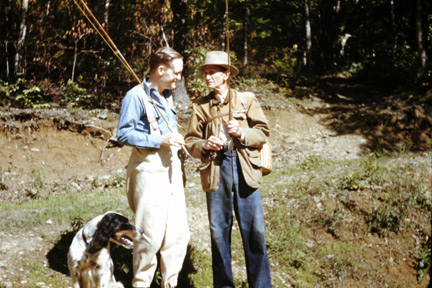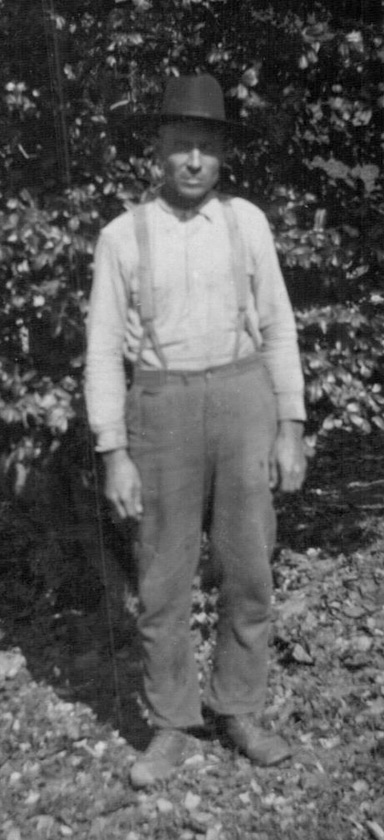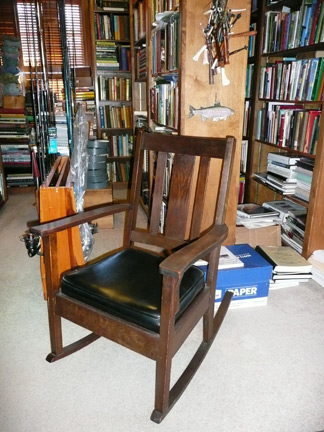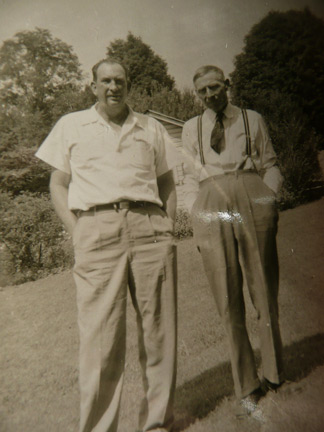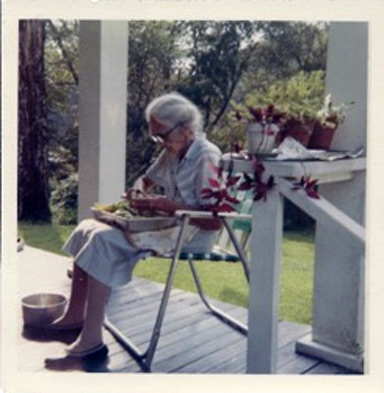February 2017 Newsletter
Click here to view this newsletter in a .pdf with a white background for easy printing. This Month's Book Specials Last month’s special offer involved some fine paperback reading featuring books by a relative newcomer on the adventure novel scene, Tony Park, whom I likened to the next Wilbur Smith. For decades Smith has turned out wonderful novels, almost all of them set in Africa, that are distinctive not only for being true page-turners but for their historical accuracy. I’ve accumulated a lot of his works over the years, and first editions of the hardbound version of most of his books hold a prime place in my personal collection. However, it’s time to get rid of a big batch of paperbacks at a very reasonable price. I’m offering all the books listed below for $7.50 (and that includes shipping). Note that many of these are really lengthy books and originally sold for two or three times what I’m asking. I’ve also included a number of hardbound books by Smith (with the exception of a single ex lib. copy none are first editions, which have some serious value in many cases). They are $12.50 each, postage paid, except where otherwise noted. Wilbur Smith Paperbacks
Wilbur Smith Hardbacks
TO ORDER Jim's Doings Over the past month I’ve stayed busy at home with minimal travel. Most of the scuppernong vines are pruned (they really all should be—I aim for Feb. 1) and if the ground gets just a bit drier I need to get the tiller out. Mainly though, I’ve spent time in front of the computer. I finished my quarterly pieces for Carolina Mountain Life magazine and I’ve got an article on one of the great names in modern turkey hunting, Dr. James Dickson, in the February issue of Outdoor Life. Also, in the current issue of Smoky Mountain Living you’ll find my profile of Tipper Pressley, a good friend whose daily blog, “The Blind Pig & the Acorn” is an ongoing testament to a woman’s passion for the wit, ways, and wonder of life in the southern Appalachians. Add to that polishing off my next piece (on turkey calls) for South Carolina Wildlife, my regular columns for two newspapers, and a lengthy foreword to a forthcoming reprint of a classic (and exceedingly rare) book on the Smokies, Sam Hunnicutt’s Twenty Years of Hunting and Fishing in the Great Smokies, an article on combining the joys of trout fishing and turkey hunting in a single day for Charleston Mercury, and a profile for the aforementioned Smoky Mountain Living on a wonderful black woman I knew named Beulah Suddreth, and you pretty well have it. About the only other thing that comes to mind was being in Atlanta at The Fly Fishing Show where I gave the induction speech into the inaugural group of “Legends of the Fly” being recognized by “Southern Trout,” an on-line magazine on the sport, for Mark Cathey. “Uncle Mark,” as he was widely known, was a pioneer in the sport and colorful character about whom I’ve written a great deal over the years. Although I only recently learned of this, thanks to genealogical researches by my brother, Don, Cathey was also a distant cousin.
Keeping busy writing and “schemin’,” as Grandpa liked to put it, is good for me. It occupies my mind, keeps the mollygrubs at bay, and hopefully results in the occasional production of some words of modest worth. Before turning to my upcoming schedule, I do need to mention one other thing I should say more often. Thanks to all of you who take time to contact me in the aftermath of these scribblings coming to you. Invariably your comments are uplifting, entertaining, or educational. I appreciate them more than you can possibly know. Now here’s what’s ahead. Feb. 25-26—Deckle Edge Literary Festival in Columbia. Specific time and subject matter tentative at this point. I have no additional details. OPEN TO THE PUBLIC. Free. Mar. 25—9:00 a.m. to 5:00 p.m. I will be at the South Carolina Wildlife Magazine booth at the 33rd annual Palmetto Sportsmen’s Classic at the State Fairgrounds in Columbia to sign books, shake-and-howdy, share a tale, and in general enjoy the company of tens of thousands of visitors and hundreds of exhibitors at South Carolina’s biggest hunting, fishing, and outdoor show. If you have books of mine you’d like signed, bring them by, and I’ll have a solid selection of my titles on sale as well. Details on the Classic, which runs Mar. 24-26, are available at www.psclassic.com. OPEN TO THE PUBLIC (Admission charged). Mar. 31-Apr. 1—Dogwood Weekend at King University in Bristol, TN (my undergraduate alma mater). I currently serve on the institution’s Alumni Advisory Board and try to make every event possible at a school which gave me a wonderful education (or at least that portion of it of which I took advantage). One of my favorite country singers, Josh Turner, will be presenting a concert in connection with this weekend, which marks the 150th anniversary of King. PRIVATE (except for the Turner concert, which is open to the public). Apr. 7—Back in Bristol for the inauguration of Alexander W. Whitaker, IV as president of King University. I’ll also be arriving a couple of days early to get in some east Tennessee turkey hunting. PRIVATE. Sept. 28-Oct. 1—South Carolina Outdoor Press Association annual conference in Florence, South Carolina. PRIVATE. Oct. 19-22—Attending annual meeting of the Southeastern Outdoor Press Association in Kentucky. I have never missed a meeting since becoming a member of this organization well over 30 years ago. PRIVATE. Nov. 11—Talk to a small group of donors who have participated in a shooting weekend that will serve as a major fundraiser for the National Sporting Library and Museum. PRIVATE (and my participation is tentative at this point). WHAT'S A BODY TO DO IN THE DEPTHS OF WINTER? Last month’s newsletter focused on what seem to me to be fading features of the life I knew as a youngster growing up in the Smokies. Interestingly, readers from various parts of the country responded by letting me know that, geographical differences notwithstanding, they recalled similar experiences from their youthful years. I find that heartening but also sad. After all, how many youth in today’s world will have similar opportunities? They aren’t found on Smart Phones or I-Pads, and even in schools set squarely in rural areas things have changed dramatically. Just this past week I had a really interesting and detailed conversation with a woman who teaches in a nearby school and who is the wife of a fellow who was a successor of mine as soccer coach at Winthrop University. We talked about a pig being raised at the school, but it wasn’t for the same reasons members of the Future Farmers of America raised hogs back in my youth. Every one of those pigs were destined, ultimately, to be pork chops and ham, sausage and souse meat. Not so this pampered pig. When she told me this privileged beast of the porcine persuasion periodically had body lotion applied, I said to the woman right then. “I can’t resist using that information. Folks will be reading about it.” Yes, ours is a different world.
Some February Fixin's One of the real comforts of February, and I’ll readily admit it’s a pretty miserable month, at least weather-wise, revolves around food. Somehow time in the kitchen putting together a savory soup or stew using game from fall hunting, or maybe whipping up a tasty dessert with berries from summer or fruit from autumn, lifts the spirits and soothes not only the inner man but the soul. Here are some “legacy” recipes, all handed down through the family for multiple generations, that fall into this category. STACK CAKE
THE SAUCE Rehydrate four or five packed cups of dried apples. You can do this by placing them in a pan of water overnight to soak, pouring off any excess water the next morning, or by cooking them in a saucepan. For the latter, bring enough water to cover the apples to a rolling boil and then reduce the heat to a low, slow simmer. Stir frequently and if the sauce becomes too dry, add a bit of water. You want the apples to be quite thick, about the consistency of apple butter. While they are simmering, add brown sugar to taste to sweeten (this will vary appreciably depending on the sweetness of the dried apples being used, but a cup should be about right) and cinnamon. Grandma always used the tiny little red cinnamon candies you could once find in any store, but I don’t remember seeing them in years, but if you use the powdered variety a teaspoon will be what you want. A generous pinch (if you have to have measurements, I reckon a hefty pinch is about a half teaspoon) of ginger and nutmeg can be added if you wish. If the sauce remains too chunky when it is ready, mash it up thoroughly. THE CAKE One key to a top-notch stack cake is very thin layers of cake that are nice and level and can be stacked atop one another (hence the name). Grandma always had seven layers, maybe because the number is considered a lucky one or perhaps simply because that was the way she did it. She didn’t measure much of anything, unless you can bring precision to a dash, dibble, pinch, or similar words, but she sure knew how to get things right. I’ll try to simplify matters a bit and use specific measurements. Incidentally, she always baked eight layers, two at a time. That gave her an extra if one cracked or something went wrong, but that seldom happened. What did happen is that someone, often in my younger years it was me, had a thin, delicious layer of cake to drizzle with a bit of honey or top with berry preserves and enjoy with milk.
5 cups all-purpose flour Preheat your oven to 350 degrees and grease then flour nine-inch cake pans. Depending on the size of your oven and how many pans you have you’ll likely need to bake in shifts of two or four layers. For the batter, thoroughly blend (with a whisk) the flour, baking powder, baking soda, and salt in a large bowl. In a second sizeable bowl, beat the shortening, sugar, and molasses with an electric mixer set to medium speed until the mixture is smooth and thoroughly creamed. Of course our forebears didn’t enjoy the luxury of blenders, but plenty of gumption and elbow grease did the job quite nicely. Next, add the eggs, one at a time, beating well as you add them. Then add the flour mixture to the moist ingredients by thirds, alternating as you go with gradual addition of the buttermilk. Once everything is well mixed, the consistency of the batter should be comparable to that of cookie dough. If it is a bit too thin, add a little more flour. The batter will be too thick to pour into the baking pans. Instead, put it on a cutting board or other floured surface (Grandma always used waxed paper) and divide it into seven or eight equal-sized sections. Then, with your hands floured, spread and pat the dough into the cake pans. It will be quite thin, perhaps a half inch or so. Before putting it in the oven, use a fork to prick the dough some. Grandma used to indulge in some fancy di-does with the top layer for decoration. Bake until golden brown and firm (probably 15 minutes but watch closely). The cake layers will not rise much if at all. The penultimate (that’s a $10 word for next to the last) step is making the stack. You do that by slathering a thin layer of sauce atop each cake layer as it comes from the oven. You’ll need to exercise some care to keep everything nice and level as the stack grows. The final step involves nothing but sheer patience. As I’ve already indicated, a proper stack cake needs to cure. That means letting it sit for a couple of days while the layers soak up the sauce and the whole melds into a soft, moist thing of wonder. Grandma always made extra sauce, and if you were so inclined (and I was) you could spoon some additional sauce atop your generous slice of stack cake. It takes quite a bit of preparation, but a stack cake is food for the gods. NOTE: While dried apples formed by far and away the most common filling, substitutes included dried peach sauce or any of the berry jams (such as wild raspberry, blackberry, or dewberry) Grandma Minnie canned each summer. FRIED SQUIRREL, GRAVY, AND SWEET TATERS There are lots of ways to prepare squirrel, but if you kill some young, tender ones (and any experienced hand will know from the skinning process), it’s mighty tough to beat just frying them. If you wish, parboil briefly to tenderize a bit. Then coat quartered squirrel pieces in flour and fry in hot grease until golden brown. Set the squirrel pieces aside atop paper towels to drain (I like to put them in a 130-degree oven, where I’ve left the baked sweet potatoes. This keeps the meat warm and also seems to draw off a bit of the excess grease) and make milk gravy with the pan drippings. When the gravy is ready, pull the baked sweet potatoes and meat from the oven and serve with some type of green vegetable such as green or lima beans. The sweet potatoes should be baked until they are soft, with loose skin and caramelized juice oozing from the ends or any puncture in the skin. FRIED QUAIL Cut each quail in half using meat scissors. You can have each piece include half a breast and a leg or, alternatively, cut the legs away from the breast and fry the still joined legs together. Dredge each piece in flour, and then dip in beaten eggs before dredging in flour again. Cook in piping hot grease (I like to save bacon drippings and use them with regular shortening) until golden brown, then drain atop paper towels. Make milk gravy with the drippings and serve either with grits or buttermilk biscuits, apple sauce, and a green vegetable. Now that’s eating at its finest. CATFISH STEW I’m not the biggest fan in the world of catfish, especially when compared to other types of fish such as trout, crappie, or bream. Still, on a chill winter’s day when it’s raining outside and grey darkens the sky as well as your mood, a hearty bowl of catfish stew with hushpuppies or a chunk of onion-laced cornbread on the side will lighten your burdens and brighten your outlook.
3 pounds catfish fillets Cover the catfish fillets with water in a soup pot and bring to a boil, simmering until the fish readily flakes. Drain and reserve the stock. Refrigerate the fish. Peel potatoes or if new potatoes leave the peels on—cut into small cubes. Add to the stock. Combine the onions and potatoes with water in a saucepan and bring to a boil then cook until tender before adding to the stock pot. Fry the streaked meat until crisp. Drain and add the meat (and if you wish, a bit of the grease) to the stock pot. Next add the cooked catfish with and the tomatoes to the stew pot. From this point forward, add tomato juice as needed to keep the soup from cooking down too much. When everything has blended nicely and you have the desired thickness to the soup, add the Worcestershire sauce and stir in, tasting and seasoning with salt, pepper, and hot sauce before serving. Thank you for subscribing to the
Jim Casada Outdoors
newsletter. |
||||||||
|
Send mail to
webmaster@jimcasadaoutdoors.com with
questions or comments about this Web site. |

